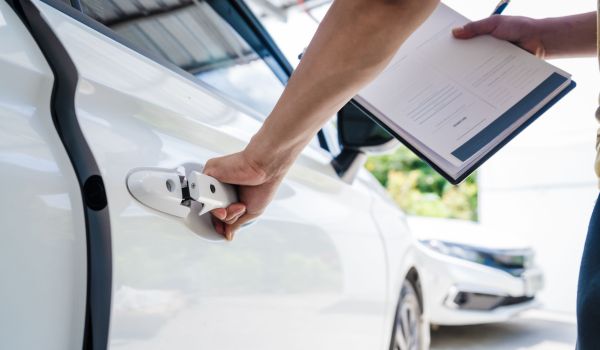Being involved in a vehicle accident—whether it’s a minor fender bender or a major collision—can be overwhelming, especially for new drivers. It’s important to know how to respond immediately after the crash and what to expect once your vehicle is sent to a collision repair shop. This step-by-step guide is designed for teen drivers and first-time drivers to help you stay calm, informed, and safe throughout the process.
How to Get Through a Vehicle Collision Incident
Step 1: Stay Calm and Check for Injuries
Immediately after the collision, take a deep breath and remain as calm as possible. First, check yourself and any passengers for injuries. If anyone is hurt, call 911 right away. Your safety and the safety of others is always the top priority.
Step 2: Move to a Safe Area
If the vehicle is drivable and it’s safe to do so, move it to the side of the road to avoid blocking traffic. Turn on your hazard lights to alert other drivers. If the vehicle cannot be moved, stay inside with your seatbelt fastened until help arrives.
Step 3: Call the Police
Even in minor accidents, it's important to call the police to document the incident. A police report is often needed when filing an insurance claim. Be honest and brief when explaining what happened.
Step 4: Exchange Information
Swap details with the other driver involved. Be sure to collect:
- Full name and contact info
- Driver’s license number
- Insurance company and policy number
- License plate number
- Make, model, and color of the vehicle
Avoid discussing who was at fault—that will be determined by insurance companies and authorities.
Step 5: Take Photos of the Scene
Use your phone to take clear pictures of:
- Vehicle damage (yours and theirs)
- License plates
- The overall scene (intersections, skid marks, traffic signs)
- Any visible injuries
These photos help your insurance company and our collision repair shop assess damage more accurately.
Step 6: Contact Your Insurance Company
Notify your insurance company as soon as possible. They’ll guide you through the claim process and help arrange towing (if needed), rental vehicles, and our trusted collision repair shop.
Step 7: Get Your Vehicle to our Collision Repair Shop: Parsons Auto Body
Once the insurance claim is started, your vehicle will be taken to a certified auto body repair shop and we recommend requesting Parsons Auto Body. This is where the repair process begins.
What Happens at the Collision Repair Shop?
Knowing what to expect at our collision shop can take a lot of the mystery out of the process. Here’s how a professional auto body shop of our caliber will handle your vehicle:
1. Vehicle Check-In & Inspection
Our shop will perform a visual and computerized inspection of your vehicle to document damage. We will compare this with your insurance adjuster’s report and look for any hidden structural or internal damage.
2. Disassembly & Damage Analysis
Sometimes, internal or frame damage isn't visible until outer parts are removed. Our team will disassemble affected areas to create a more accurate repair plan. They may need to adjust the estimate based on what they find.
3. Insurance Approval & Parts Ordering
Once the full scope of repairs is known, our shop will work directly with your insurance provider to get everything approved. Then, they’ll order factory or certified aftermarket parts as needed.
4. Structural & Frame Repair
If your vehicle’s frame or structural elements are bent, the shop will use precise equipment to realign it to factory specifications. This ensures your vehicle is safe and will handle correctly on the road.
5. Body Repair & Paint Prep
Damaged panels are either repaired or replaced. Our technicians sand, fill, and smooth surfaces to prepare for paint. High-tech color matching systems ensure the new paint blends perfectly with the rest of the vehicle.
6. Painting & Finishing
Your vehicle enters the paint booth where our trained painters apply multiple layers of primer, paint, and clear coat. The result is a flawless, factory-quality finish.
7. Reassembly & Quality Check
Repaired parts are reinstalled, lights are connected, and final touches are added. The vehicle then goes through a strict quality control inspection to ensure everything meets safety standards.
8. Detailing & Delivery
Your vehicle is cleaned inside and out, ensuring it looks as good as new. When you come to pick it up, our repair team will explain what was done and answer any questions.
Advice for New Drivers
Experiencing a collision can feel scary, but knowing what steps to take after the accident—and understanding the repair process—can give you confidence and control. Our trusted collision repair shop is there not just to fix your vehicle, but to guide you through the process, keep you informed, and make sure your vehicle is returned safely and correctly repaired.
If you’re a teen driver or new to the road, save this blog or print it out—it’s a smart guide to keep in your glove box just in case.

